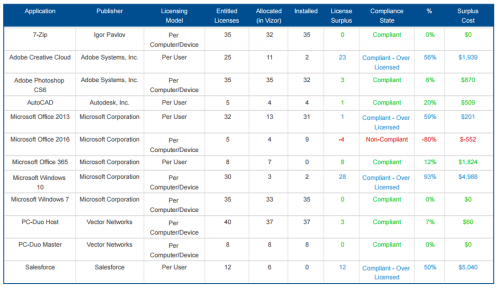Back to Basics: What is Effective License Position (ELP)?
Have you heard of ELP, or Effective License Position? The term was coined by Microsoft and serves as an important step in the software asset management process.
The basic premise of forming an ELP involves comparing your entitlements with your deployments. Establishing an effective license position means taking full inventory of software assets and comparing them against license documentation & installations. This allows your organization to see where it may be over- or under-licensed, presenting opportunities for improvements in license compliance.
Here is an example of what this might look like:

One important thing to note about the ELP is that it is effective as a step in effective software asset management, not as a standalone process. Once you have established your ELP based on entitlements versus installations, you must plan a sufficient strategy from there.
An ELP is crucial for helping you to monitor risks and it’s important to stay on top of, but not to be solely relied on. It should serve as a first step in finding discrepancies in your licenses, and lead you to correcting any problems from there. This is where a proper SAM strategy comes in to go hand-in-hand with your ELP. Good SAM in combination with an ELP is what allows you to optimize your license entitlements and prevent over-licensing.Knowing your ELP and having an effective SAM program will allow you to stay on top of your license position, decrease risks and be one step ahead when external auditors arrive.
Do you need a tool to manage Software Licenses?





